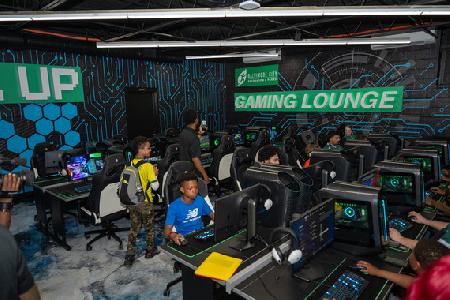Museums have no trouble getting refined, and that proved to be helpful to hackers at the Walters Art Museum last weekend. The third edition of ArtBytes called for hackers to target their ideas to specific audiences, and focus their presentations. Organizers even outlined how their projects should look.
Rather than hamper creativity, however, the increased focus produced eight projects (half as many as in 2014) with many specifics filled in. The idea was to bring technology to the museum experience, and hopefully produce a project that the Walters will use in the near future.
Starting on Friday night, projects were proposed and eventually whittled down in the museum’s sculpture court. Devs helping each team were happy to tap into the Walters’ API, which was developed at the first ArtBytes in 2013 and launched last year. The ability to query data from the Walters’ digital records formed the basis for a number of standalone apps — and even helped one team put together a board game.
Here are brief summaries of the projects, all of which won a share of $5,000 in cash prizes:
THE $1,000 WINNERS
4D Odyssey: Developed by two Baltimore city school teachers and Kathleen Mazurek of the Digital Harbor Foundation, this project seeks to create “auras” of museum art in real time. Museum visitors can scan one of the objects found in the museum with the shareware, triggering an audio or video summary of the art. There’s also room for users to generate their own voiceover. The team thinks it would also be useful as an interactive tool for teachers.
Scavenge Art: Described as a “’Where’s Waldo’ for art,” this game urges players to match photos on a screen with art found in the museum. It also includes a map of the world that traces where the art originated, as well as collections it passed through before arriving at the Walters. It’s equipped with location tracking and can provide feedback to museum staff about how many visits an object got, and other analytics.
Paragone: This app, which you can already peruse on Heroku, brings social elements into the museum experience. It presents top museum picks of the day, then allows viewers to comment. To focus the conversation, the app provides prompts that encourage users to specify what they think about a piece of art. It also links to Twitter so you can see what’s trending.
THE $500 WINNERS
Pandora for Art: Another tool to inspire user interaction, this program uses accession numbers of each piece of art to generate basic info like title and artist. Then, the program asks users what they generally like about the piece, and directs them to others based on their taste. Or, it can generate a random recommendation. The program also includes an interactive map of the globe that traces the origin of the work, and where it was displayed before arriving on Mt. Vernon. It’s currently in Java, but the code could be used to produce an app.
Culture Crunch: Led by two of the principals at Alchemy Learning, this team produced an app that connects Common Core standards with objects at the museum. The interactive lessons can help teachers prepare lessons before, during and after visits.
Art How?: This project seeks to dig into a question that judges acknowledged many artists don’t often think about: How is a piece of art made? The “How Did They Do That?” app allows museum staff to upload content that explains how a piece of art was created. The team envisions room for video and user-generated content, as well as a comments section.
THE $250 WINNERS
Kinda-Sorta: This app, also already available on Heroku, seeks to make art pieces searchable, so as to identify works that are similar. The idea is to put relevancy in control of the user, rather than the museum staff. The developer found difficulty in finding connections between categories due to the discrete nature in which the museum categorizes its holdings. Judges said the challenges taught them the most out of any project about the inherent issues in connecting the museum world with the web world.
WAM! The Board Game: One team responded to the challenge by designing a game that doesn’t require a phone connection, or any electricity, for that matter. This board game splits the museum into geographical sections. Players move around the board until they collect enough points to win.
To see what’s been developed in coding language, check out the Walters on GitHub.
Join the conversation!
Find news, events, jobs and people who share your interests on Technical.ly's open community Slack

Baltimore daily roundup: Medtech made in Baltimore; Sen. Sanders visits Morgan State; Humane Ai review debate

Baltimore daily roundup: An HBCU innovation champion's journey; Sen. Sanders visits Morgan State; Humane Ai review debate

Baltimore daily roundup: The city's new esports lab; a conference in Wilmington; GBC reports $4B of economic activity




